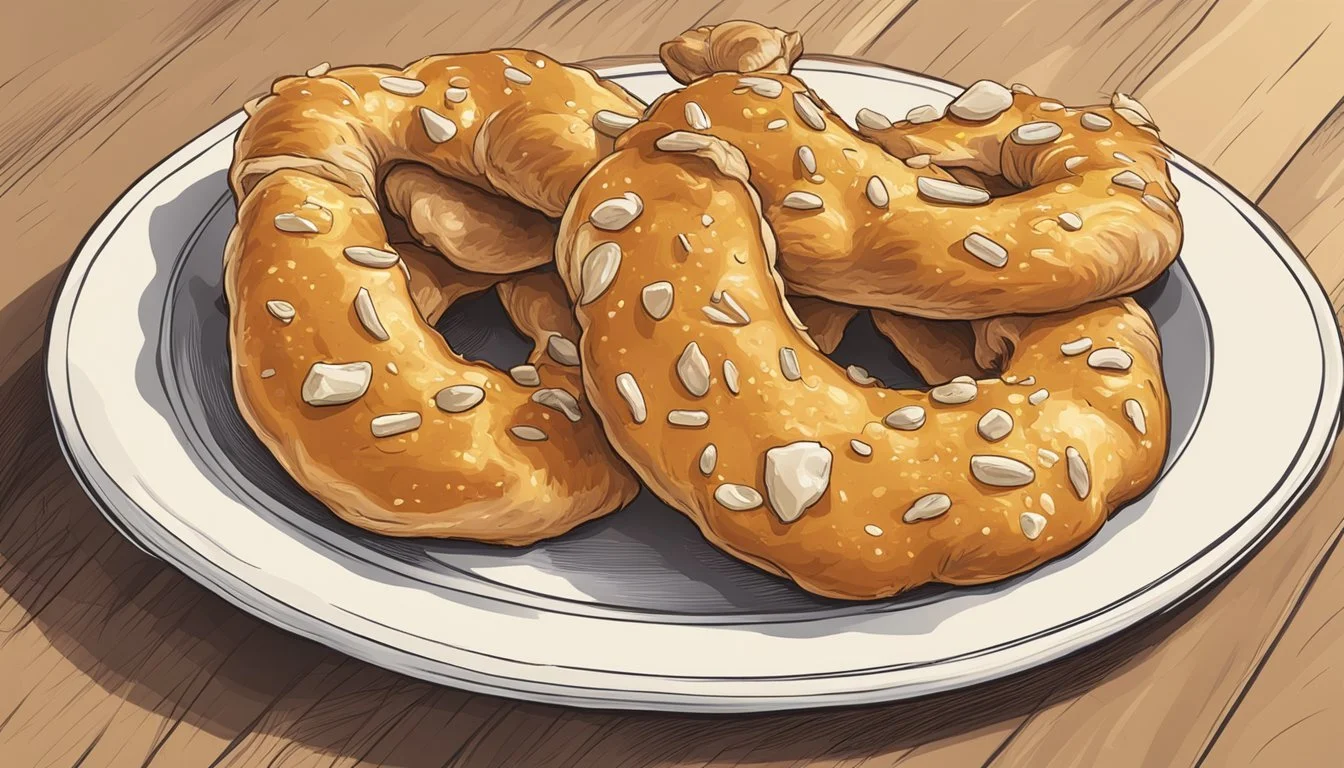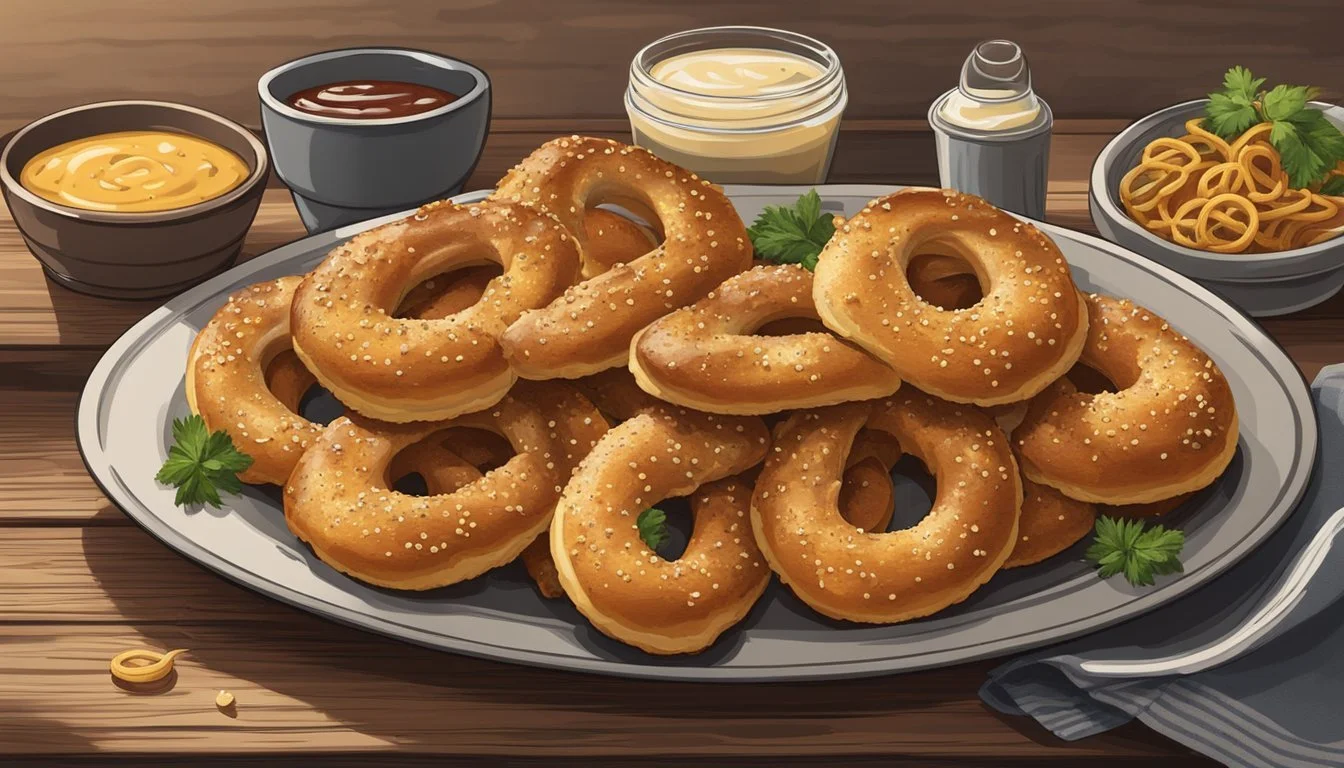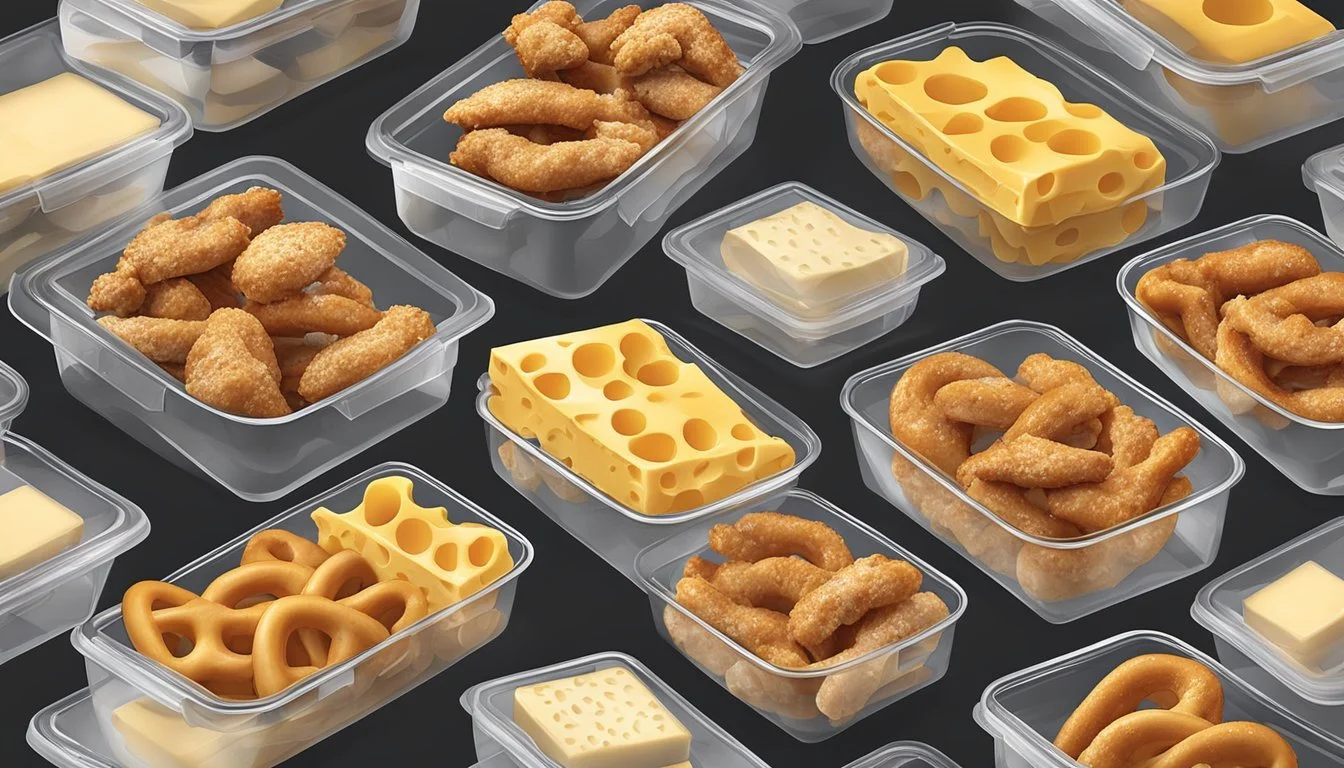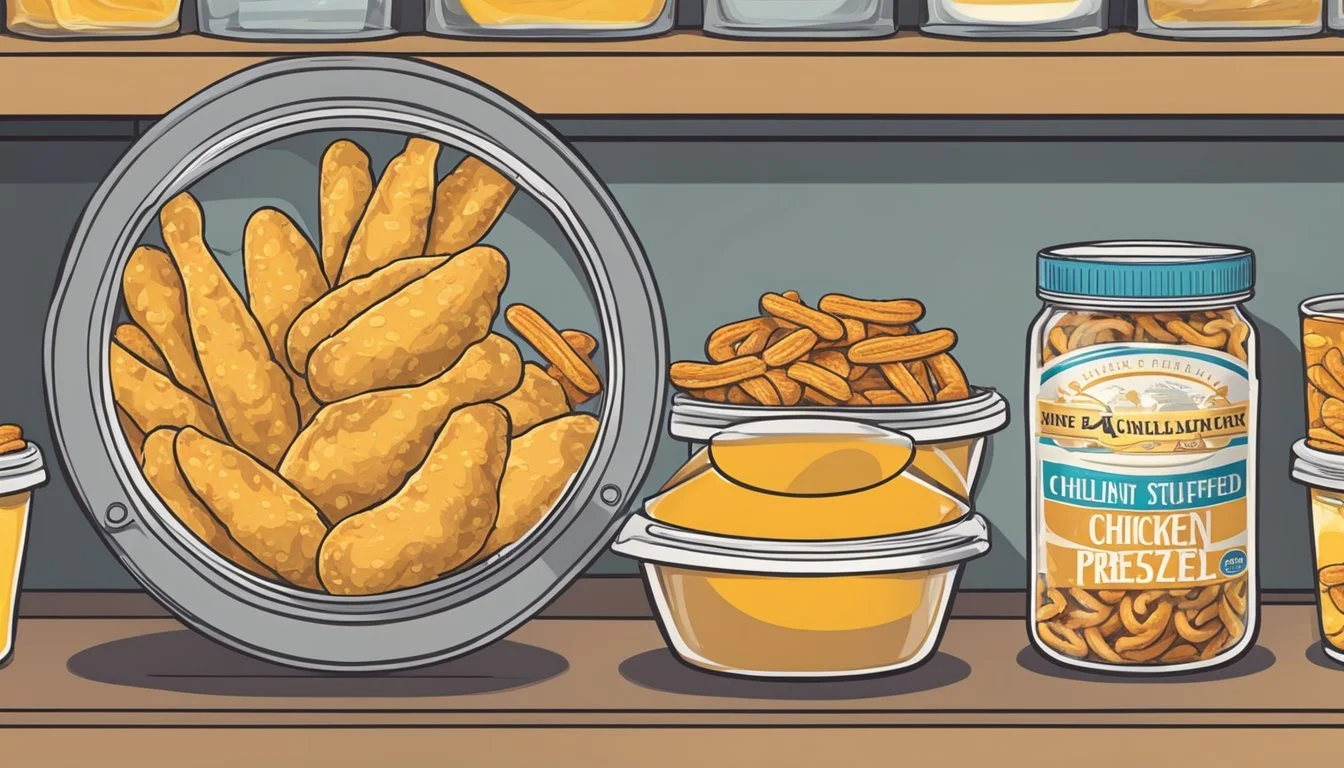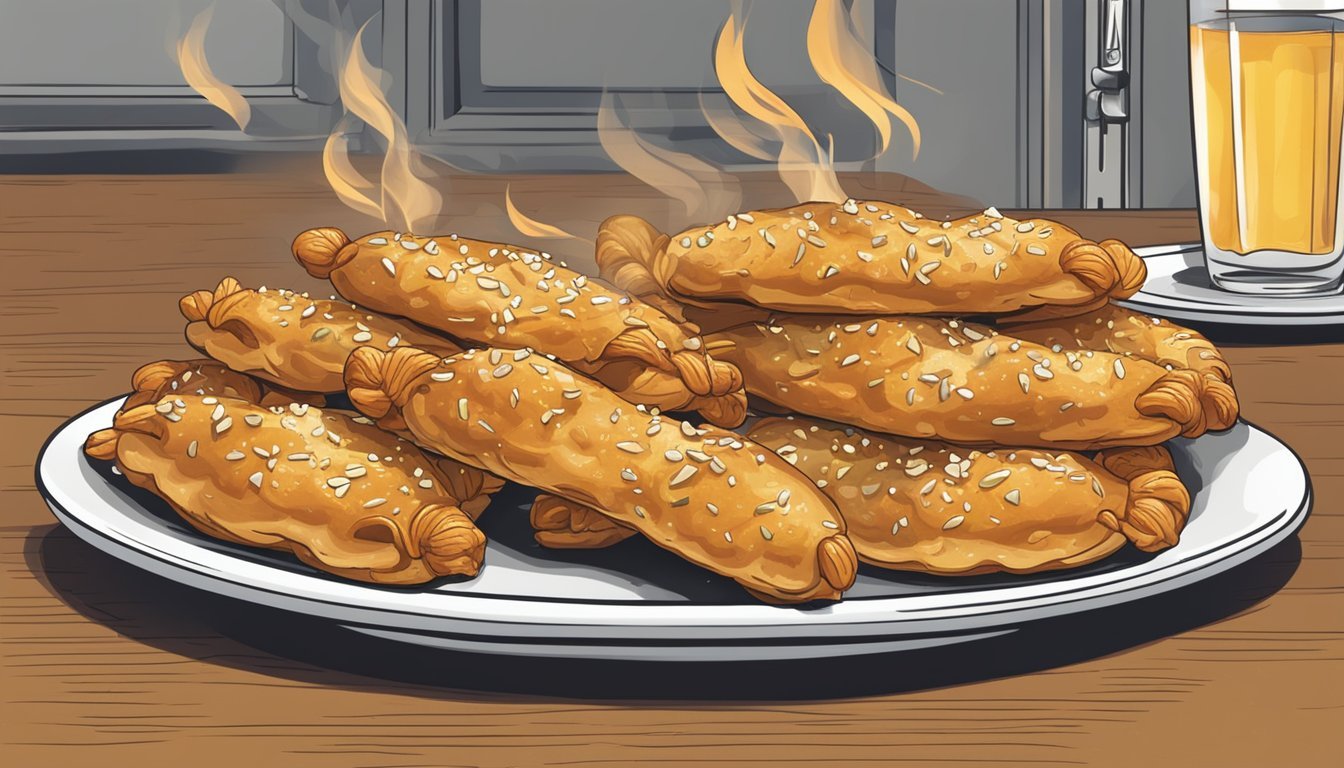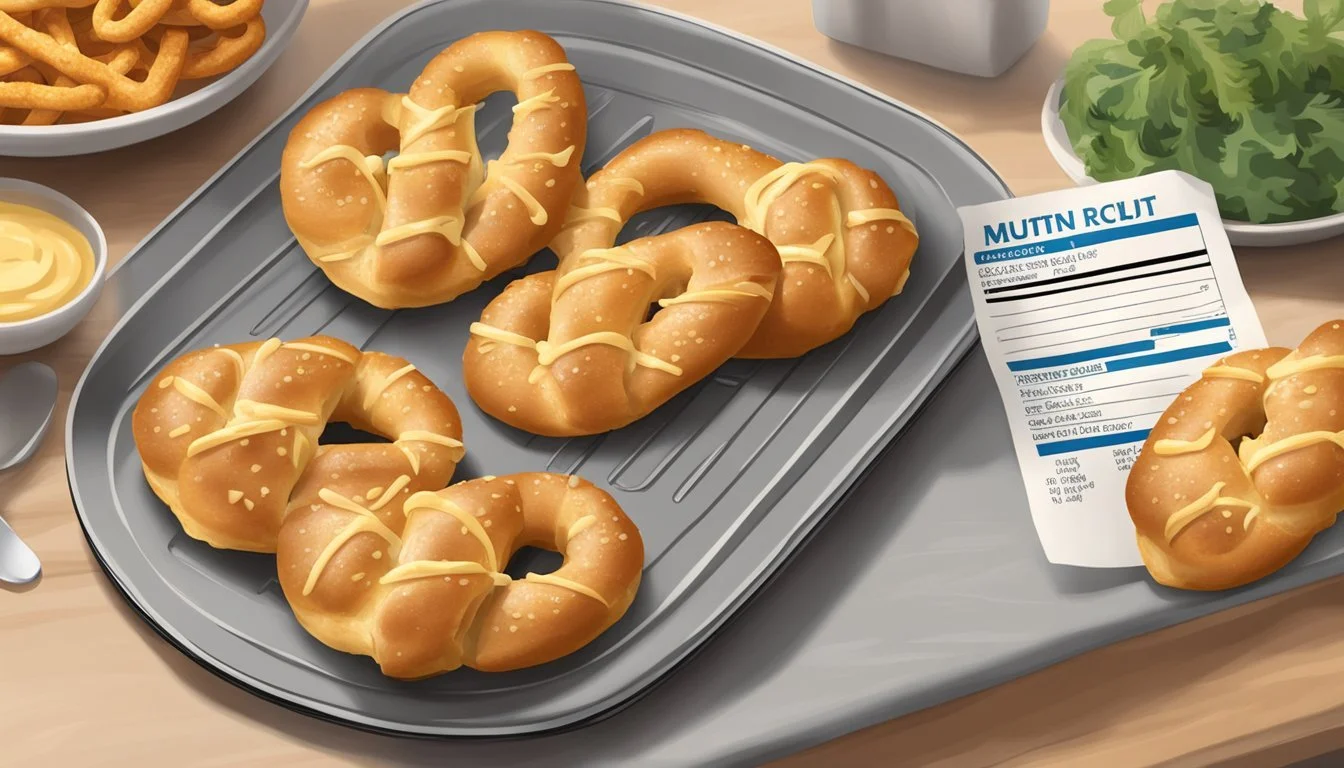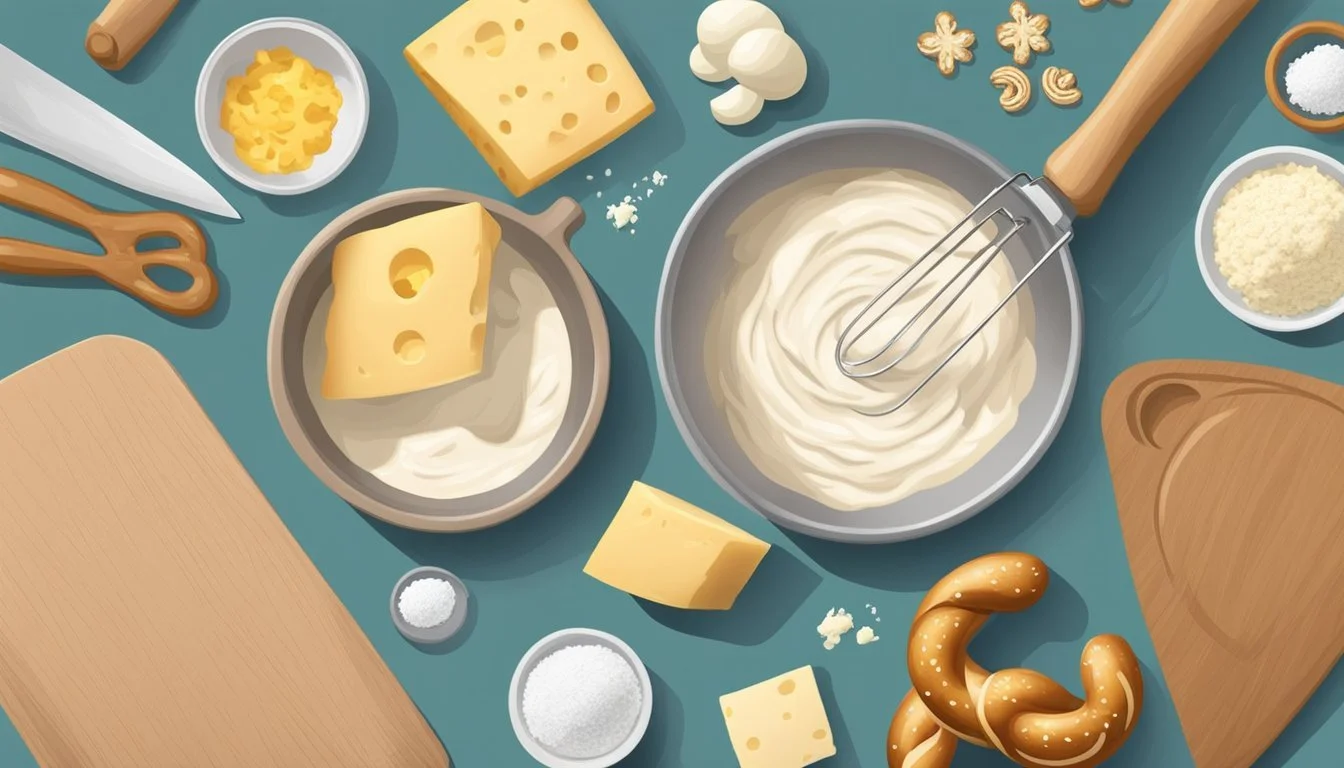How Long Do Chicken and Cheese Stuffed Pretzels Last?
Storage Tips and Shelf Life
Chicken and cheese stuffed pretzels, a delicious combination of savory flavors, are a treat many people enjoy. Properly stored in an airtight container in the refrigerator, these tasty snacks can last for up to three to five days. This makes them a convenient option for meal prep or a tasty leftover snack.
To ensure the pretzels remain fresh, it is crucial to store them correctly and reheat them properly. When reheating, make sure to warm them enough to melt the cheese without overcooking the pretzel dough, keeping that perfect balance of gooey and soft.
Whether eaten as a snack or a meal, chicken and cheese stuffed pretzels provide a versatile and flavorful option. The key to enjoying them for several days lies in proper storage and mindful reheating.
Understanding Cheese Stuffed Pretzels
Cheese stuffed pretzels have gained popularity for their delightful combination of soft pretzel dough and melty cheese. Their crisp outer layer and gooey interior make them a favorite snack.
History and Popularity
Pretzels are believed to have originated in Europe, likely from monks in the early medieval period. The iconic shape is associated with religious symbolism, resembling arms crossed in prayer.
Stuffed pretzels, including those with cheese, emerged as modern culinary innovations. The fusion of soft pretzel dough and cheese began gaining popularity in recent decades, especially in the United States. Popular flavors like cheddar and mozzarella boosted their appeal.
Types and Variations
Cheese stuffed pretzels come in various forms, from large twisted shapes to small pretzel bites. Different regions and personal preferences have led to several variations. Mozzarella, cheddar cheese, and pepper jack are common choices for stuffing.
Some recipes incorporate additional ingredients like jalapeños or ham to enhance flavor. Soft pretzels may also be served with dipping sauces, such as mustard or cheese sauce, adding another layer of deliciousness.
Key Ingredients and Flavors
The main components of cheese stuffed pretzels are the dough and the cheese. The dough is made from flour, water, yeast, sugar, and salt. Key flavors come from the cheese, which may include cheddar, mozzarella, or Swiss cheese.
The texture is crucial. The outer layer should be crispy while the inside remains soft and cheesy. Homemade versions often allow for customization, adding a personal touch to the traditional recipe.
Preparation Essentials
Prepare to create delicious chicken and cheese stuffed pretzels with a clear understanding of the dough-making, stuffing, shaping, and baking techniques. Paying attention to these core steps ensures a successful outcome.
Making the Dough
Start by mixing flour, sugar, and salt in a large bowl.
In a separate container, combine instant yeast with warm water until it becomes foamy, signaling activation.
Melt unsalted butter and add it to the yeast mixture. Pour the liquid mixture into the dry ingredients and stir until a rough dough forms.
Knead the dough on a lightly floured surface until it is smooth and elastic. This typically takes about 5-7 minutes. Place the dough in a lightly oiled bowl, cover it with a towel, and let it rise in a warm place until it has doubled in size, approximately 1-2 hours.
Stuffing and Shaping Process
Once the dough has risen, divide it into smaller portions. Roll each piece of dough into a rectangle.
For the stuffing, sprinkle shredded chicken and cheese across the middle of the rectangle. Fold the bottom third of the dough over the filling and then the top third over that to encase the filling.
Pinch the seams to seal the dough completely to prevent any filling from leaking during baking. Shape the filled dough into a classic pretzel shape, ensuring the ends are secure.
The Baking Technique
Preheat the oven to the correct temperature, usually around 400°F (200°C).
Prepare a large pan with baking soda solution by boiling water and stirring in the baking soda. Dip each shaped pretzel into the solution for 20-30 seconds, ensuring it is fully immersed. This step gives the pretzels their signature chewy crust.
Drain any excess solution and place the pretzels on a baking sheet lined with parchment paper. Brush each pretzel with an egg wash made from beaten egg and milk to achieve a glossy finish when baked. Bake until golden brown, typically 12-15 minutes.
Proper Storage Techniques
Proper storage is crucial to maintaining the quality and safety of chicken and cheese stuffed pretzels. This section provides clear methods to store them both short-term and long-term, as well as how to identify signs that they may no longer be safe to consume.
Short-Term Storage
For immediate consumption, chicken and cheese stuffed pretzels should be stored in the fridge. Ensure they are placed in an airtight container to prevent exposure to air, which can cause them to turn stale and degrade faster.
To maintain their texture, wrap them in aluminum foil before placing them in the container. Store at 40°F (4°C) or less.
It's important to note that they typically last up to 3-4 days in the refrigerator. Check for any signs of spoilage such as an unpleasant odor or visible mold.
Long-Term Storage Options
For extending shelf life beyond a few days, freeze the stuffed pretzels. Again, airtight containers or freezer bags are essential to prevent freezer burn and maintain freshness.
Wrap each pretzel individually with foil to create an added barrier against moisture loss. Store at 0°F (-18°C) or lower. When properly stored, they can last up to 2-3 months in the freezer.
When ready to eat, thaw them in the fridge before reheating to preserve their texture and avoid uneven heating.
Understanding Shelf Life Indicators
Knowing when pretzels are still good to eat requires vigilance. Signs of spoilage include visible mold, a slimy texture, or a foul odor. While these indicators clearly show spoilage, a key part of ensuring safety is also understanding that even properly stored pretzels have a limited shelf life.
Unopened packages often have additive preservatives that can extend shelf life when stored in cool, dry conditions.
Always check expiration dates if available, and regularly inspect fridge and freezer-stored pretzels for any changes in appearance or smell.
For optimal safety and quality, consume refrigerator-stored pretzels within 3-4 days, and freezer-stored ones within 2-3 months. This practice helps ensure that the food remains delicious and safe to eat.
Safety and Quality Preservation
Maintaining the safety and quality of chicken and cheese stuffed pretzels involves proper storage techniques and being vigilant about spoilage indicators. Proper handling can minimize the risk of foodborne illnesses and ensure optimal flavor.
Preventing Spoilage
To prevent spoilage, store chicken and cheese stuffed pretzels in the refrigerator. Temperature control is key; keep them at or below 40°F (4°C).
Avoid leaving them at room temperature for more than 2 hours. Freezing is an option for long-term storage, extending their shelf life up to a month.
Packaging is crucial. Wrap pretzels in plastic cling wrap before placing them in airtight containers. This prevents moisture loss and contamination. Employing these methods reduces the risk of spoilage considerably.
Signs of Expiration
Mold is a clear sign of expiration. Any fuzzy or discolored patches should prompt immediate disposal.
Chicken and cheese fillings are prone to spoilage; off odors or slimy textures indicate bacterial growth and potential food poisoning risks.
Taste is also a reliable indicator. If the pretzel's flavor is off, it's safest to discard it. Regularly check expiration dates and adhere to storage guidelines to maintain safety and quality.
Reheating and Serving Suggestions
For optimal taste and texture, follow these specific methods for reheating your chicken and cheese stuffed pretzels. Pairing with suitable accompaniments can significantly enhance your dining experience.
Best Practices for Reheating
To reheat chicken and cheese stuffed pretzels while keeping them warm and crunchy, the oven is the best method. Preheat the oven to 350°F (175°C). Place the pretzels on a baking sheet, ensuring they don't touch each other. Heat them for about 10-15 minutes until the cheese is melted and the pretzels are crispy.
For a quicker option, use the microwave. Place the pretzels on a microwave-safe plate. Cover them with a damp paper towel to prevent drying out. Set the microwave to medium power and heat for 1-2 minutes. Check if the cheese is melted and the pretzels are heated through.
Avoid overheating as this can dry out the cheese and make the pretzels less enjoyable. Always check that they reach an internal temperature of 165°F for safe consumption.
Accompaniments and Pairings
Serve chicken and cheese stuffed pretzels with dipping sauces to enhance their flavor. Popular choices include honey mustard, ranch, or a spicy buffalo dip. Soup pairs well with these pretzels, providing a comforting and balanced meal. Tomato soup, chicken noodle, or a creamy potato soup are excellent options.
For a more filling meal, consider adding sides like a crisp salad or roasted vegetables. A salad with a light vinaigrette can complement the rich taste of the pretzels, while roasted veggies add a hearty touch. For an appetizer spread, serve small pretzel pieces with a variety of dips and a cheese platter.
Nutritional Information
Chicken and cheese stuffed pretzels provide a rich mix of nutrients, making them a popular snack choice.
Calories: One stuffed pretzel can have approximately 300-400 calories. The calorie count can vary based on the size and specific ingredients used.
Protein: These pretzels offer a good source of protein, primarily from the chicken and cheese. Each pretzel may provide around 15-20 grams of protein.
Fats: Fats present in stuffed pretzels come from cheese and any added oils or butter. Expect around 10-15 grams of fat per pretzel, with a mix of saturated and unsaturated fats.
Sodium: Sodium content is relatively high due to the cheese and sometimes salted pretzel exterior. Each serving could contain between 800-1000 milligrams of sodium.
Nutritional Summary:
Calories: 300-400
Protein: 15-20 grams
Fats: 10-15 grams
Sodium: 800-1000 milligrams
Remember, values can differ based on preparation methods and specific ingredients used.
Creative Twists and Customizations
Incorporating creative twists and customizations can elevate the traditional stuffed pretzel into a unique and flavorful treat. These variations allow for alternative fillings and toppings, as well as diet-specific adaptations, catering to different tastes and dietary needs.
Alternative Fillings and Toppings
Exploring various fillings can transform stuffed pretzels into gourmet snacks. Pizza-inspired fillings are popular; adding pepperoni and mozzarella creates a savory delight resembling mini calzones. On the sweeter side, chocolate or cinnamon-sugar fillings provide a decadent dessert option.
Topping the pretzels differently also brings variety. Salt is classic, but adding grated Parmesan cheese or chopped nuts offers new flavor profiles. Spritzing the pretzels with melted butter and then dusting with flavored salts or spices can enhance the overall experience.
Diet-Specific Adaptations
For individuals with dietary restrictions, making specific adjustments ensures everyone can enjoy these tasty treats. For a gluten-free version, substituting traditional flour with a gluten-free blend maintains texture and flavor.
Vegan adaptations involve omitting animal products like butter and cheese, and using plant-based alternatives such as vegan cheese and butters. For lower-carb options, using almond or coconut flour reduces carbohydrate content.
Including different oil options like olive or coconut oil can cater to those with dairy allergies or specific dietary preferences. These modifications maintain the integrity and deliciousness of the stuffed pretzels while accommodating various dietary needs.
Recommended Tools and Equipment
Baking Sheet: A sturdy, non-stick baking sheet is essential. It's used to cook the pretzels evenly without sticking.
Parchment Paper: Line the baking sheet with parchment paper to prevent sticking and ease cleanup.
Mixing Bowls: Various mixing bowls are needed for preparing dough, mixing cheese, and handling coatings like flour and breadcrumbs.
Kitchen Scale: Useful for accurately measuring ingredients to ensure consistent results.
Whisk: Ideal for combining wet and dry ingredients smoothly.
Pot: Required for boiling water to briefly poach pretzels before baking.
Boiling Water: Used in the poaching process to give pretzels their distinct texture.
Slotted Spoon: Handy for removing pretzels from boiling water quickly and safely.
Spatula: Useful for handling dough and flipping pretzels on the baking sheet.
Oven Mitts: Essential for protecting hands when handling hot baking sheets and pots.
Each of these tools and equipment ensures the process runs smoothly and efficiently.

